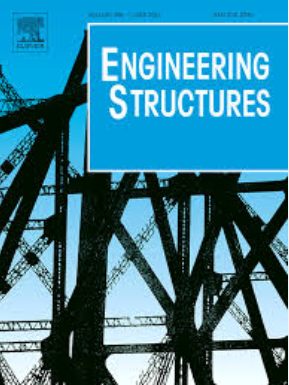Blast resistance of steel jacket reinforced double-column bridge pier
IF 5.6
1区 工程技术
Q1 ENGINEERING, CIVIL
引用次数: 0
Abstract
Amidst the rise of regional military conflicts and terrorist activities, explosive attacks have emerged as a significant threat to critical structures, including high-rise buildings and bridges. This study adopts four explosion loads from authoritative counter-terrorism sources and uses LS-DYNA to perform numerical simulations of explosive events. The accuracy of the numerical simulations is initially validated against field test results. The numerical analysis examines various explosion locations, typical explosive sources, and the design of steel jacket reinforcement. It analyzes the impact of explosive loading on the horizontal displacement and acceleration response of double-column piers under bridge-forming conditions and examines the effectiveness of steel jacket reinforcement in mitigating the effects of explosive loading and enhancing protection mechanisms. Additionally, a parametric study is conducted to explore the influence of steel pipe thickness and coverage rate on the explosive response. The findings reveal that as the explosion location shifts from the outer to the inner side of the double-column pier, the response and damage to the more distant columns become increasingly severe. The application of 20 mm steel pipe protection significantly reduces plastic deformation caused by explosions, as the steel pipes help absorb the explosive energy. While increasing steel pipe thickness yields only marginal improvements in blast resistance, reducing the steel pipe coverage rate significantly enhances protective performance and mitigates additional concrete damage from lateral thrust.
求助全文
约1分钟内获得全文
求助全文
来源期刊

Engineering Structures
工程技术-工程:土木
CiteScore
10.20
自引率
14.50%
发文量
1385
审稿时长
67 days
期刊介绍:
Engineering Structures provides a forum for a broad blend of scientific and technical papers to reflect the evolving needs of the structural engineering and structural mechanics communities. Particularly welcome are contributions dealing with applications of structural engineering and mechanics principles in all areas of technology. The journal aspires to a broad and integrated coverage of the effects of dynamic loadings and of the modelling techniques whereby the structural response to these loadings may be computed.
The scope of Engineering Structures encompasses, but is not restricted to, the following areas: infrastructure engineering; earthquake engineering; structure-fluid-soil interaction; wind engineering; fire engineering; blast engineering; structural reliability/stability; life assessment/integrity; structural health monitoring; multi-hazard engineering; structural dynamics; optimization; expert systems; experimental modelling; performance-based design; multiscale analysis; value engineering.
Topics of interest include: tall buildings; innovative structures; environmentally responsive structures; bridges; stadiums; commercial and public buildings; transmission towers; television and telecommunication masts; foldable structures; cooling towers; plates and shells; suspension structures; protective structures; smart structures; nuclear reactors; dams; pressure vessels; pipelines; tunnels.
Engineering Structures also publishes review articles, short communications and discussions, book reviews, and a diary on international events related to any aspect of structural engineering.
 求助内容:
求助内容: 应助结果提醒方式:
应助结果提醒方式:


